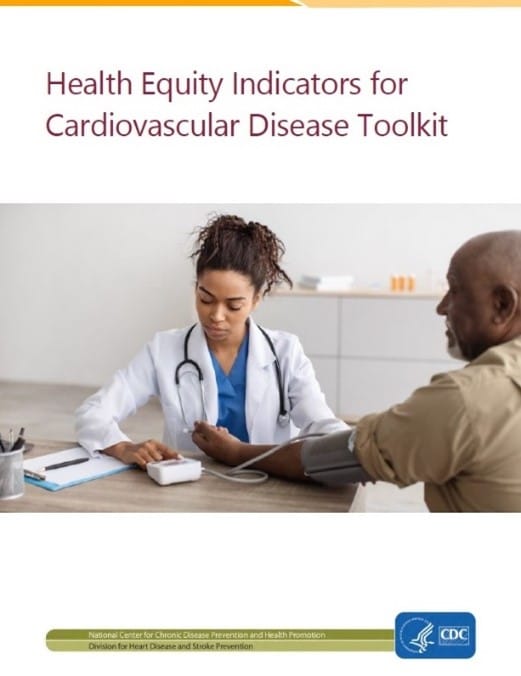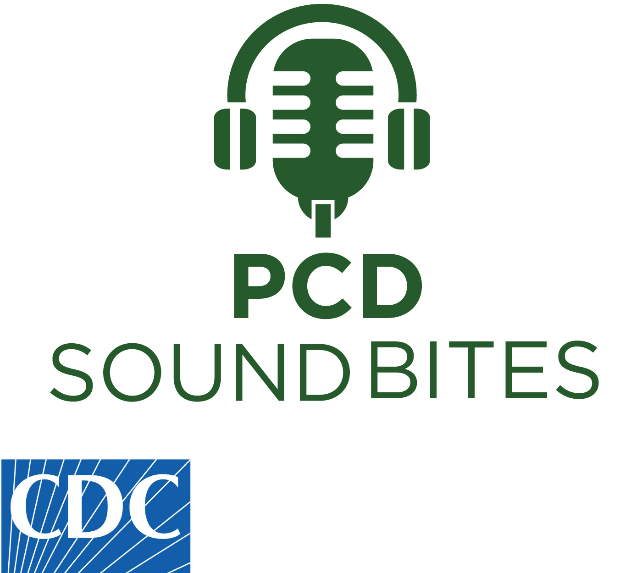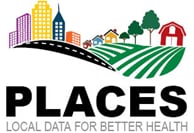News You Can Use!
‹View Table of Contents
- Navigating The 2023-2024 Respiratory Virus Season: A Closer Look at the Impact on Communities of Color
- New Toolkit Supports Health Equity Measurement for Cardiovascular Health
- Gastrointestinal Cancer in American Indian and Alaska Native People
- Podcast on the Impact Racism Can Have on Health
- Costs of Fatal and Nonfatal Firearm Injuries in the U.S., 2019 and 2020
- CDC PLACES Adds 9 New Social Measures to Improve Local Community Health
- A Shift in Approach to Addressing Public Health Inequities in Considering Societal Structural and Systemic Drivers and Their Impact on Social Determinants of Health
- Guiding Principles Help Healthcare Community Address Potential Bias Resulting from Algorithms
Navigating The 2023-2024 Respiratory Virus Season: A Closer Look at the Impact on Communities of Color

Amy Hinojosa, President and CEO of and founding member of the Health Equity Collaborative (HEC), recently sat down with Dr. Leandris Liburd, Acting Director of the Centers for Disease Control and Prevention’s Office of Health Equity (OHE), to discuss respiratory virus activity in the U.S. and other critical aspects of our nation’s public health sector. The insightful talk delved into the importance of vaccinations, available resources for patients seeking care, and strategies to bridge health inequities among diverse populations. This discussion was an extension of collaborations and partnerships between OHE and organizations that serve communities disproportionately impacted by the respiratory virus season to ensure these communities receive accurate and timely prevention messaging.
Watch the full discussion HEC’s YouTube channel.
New Toolkit Supports Health Equity Measurement for Cardiovascular Health

The Centers for Disease Control and Prevention’s Division for Heart Disease and Stroke Prevention (DHDSP) is excited to announce the recent launch of The Health Equity Indicators for Cardiovascular Disease (CVD) Toolkit. This toolkit is a new online resource developed by DHDSP for health care and public health professionals who are interested in monitoring and evaluating their cardiovascular health work with an equity perspective.
The Toolkit provides a wide range of health equity indicators (HEIs) that span across multiple social determinants of health to measure inequities in CVD prevention, care, and management, along with measurement guidance and other supporting resources. Toolkit users can apply HEIs to understand drivers of inequities in their communities or patient populations, assess progress, evaluate intervention outcomes, and guide actions to address CVD disparities.
Check out the Health Equity Indicators for CVD Toolkit available on the DHDSP website.
Gastrointestinal Cancer in American Indian and Alaska Native People

In commemoration of National Native American Heritage Month this past November, CDC’s Division of Cancer Prevention and Control has published a new data brief “Gastrointestinal Cancer in American Indian and Alaska Native People “ to raise awareness about cancer prevention and control efforts in Indian Country. Incidence rates for gastrointestinal (GI) cancers among non-Hispanic American Indian and Alaska Native (NH-AIAN) people varied by geographic region. Five sites, including colorectal, esophagus, liver, pancreas, and stomach, made up 90% of GI cancers reported among NH-AIAN people.
This data brief analyzes the percent distribution and incidence rates of the five most common GI cancers among NH-AIAN people in Purchased/Referred Care Delivery Areas (PRCDA) counties across the United States. PRCDA are counties that contain federally recognized tribal lands or are adjacent to tribal lands. Read the full brief online.
Podcast on the Impact Racism Can Have on Health

CDC’s online journal Preventing Chronic Disease recently posted a new podcast featuring Dr. Jeffrey Hall from CDC’s Office of Health Equity and Dr. Ebony Boulware from Wake Forest University School of Medicine. In this podcast, Drs Hall and Boulware talk about the impact racism can have on health.
Listen to this podcast and others in the Preventing Chronic Disease series in CDC’s Public Health Media Library.
Costs of Fatal and Nonfatal Firearm Injuries in the U.S., 2019 and 2020

Firearm-related injuries are among the five leading causes of death for people aged 1–44 years in the U.S. The immediate and long-term harms of firearm injuries pose an economic burden on society. This publication from the American Journal of Preventative Medicine highlights racial/ethnic differences in fatal firearm injuries and the disproportionate cost burden to urban areas.
Addressing this important public health problem can help ameliorate the costs to our society from the rising rates of firearm injuries. Read the full publication online.
CDC PLACES Adds 9 New Social Measures to Improve Local Community Health

The Centers for Disease Control and Prevention’s PLACES now includes nine new Social Determinants of Health (SDOH) measures. These enable public health and community planners to examine the underlying social factors along with health data at the local level to better address their community needs.
“Social determinants of health” refer to the building blocks needed for well-being, which some of us have access to, but others do not. They include the nonmedical factors that influence health, including the conditions in which people are born, live, and work and the wider set of systems that shape daily life.
The added measures from the American Community Survey include social factors that can influence health, like:
- Poverty
- Education
- Unemployment
- Housing
- Internet access
- Single-parent households
The new measures can help public health and community planners better identify overlapping health and social factors to allocate limited resources and plan public health promotion, prevention, treatment, and management strategies.
For example, identifying communities with high rates of chronic disease along with factors like unemployment can help shed light on the link between these broader social factors and health outcomes—highlighting areas in need of public health, social, or structural solutions.
See how these new measures can help your community. Explore the updated PLACES data today!
A Shift in Approach to Addressing Public Health Inequities in Considering Societal Structural and Systemic Drivers and Their Impact on Social Determinants of Health

The Social Science Research Network (SSRN) has published a report discussing the distinction between social determinants of health (SDOH) and the structural and systemic drivers of health (SSD). The report proposes that, while SDOH are the conditions in which people are born, grow, live, work, and age that influence health outcomes; SSD are the social, cultural, political, and economic contexts that create and shape the SDOH. Integrating constructs from widely cited examples, it proposes an SSD model that broadens the contextual impact of these driving forces or factors rooted within the CDC’s SDOH framework.
Read the full paper on the SSRN website.
Guiding Principles Help Healthcare Community Address Potential Bias Resulting from Algorithms

A paper published in JAMA Network Open addresses the use of healthcare algorithms and provides the healthcare community with guiding principles to avoid repeating errors that have tainted the use of algorithms in other sectors.
The paper, Guiding Principles to Address the Impact of Algorithm Bias on Racial and Ethnic Disparities in Health and Health Care, is based on work conducted by a technical expert panel that included researchers at the Agency for Healthcare Research and Quality (AHRQ). The panel developed a conceptual framework to apply guiding principles across an algorithm’s life cycle to address the problems of structural racism and discrimination, centering on healthcare equity for patients and communities as the overarching goal.
Read the full paper on the JAMA Network Open.